30 Hrs – Shat-Karma (Detoxification Course) & Pranayama Teacher Training Certification Course, Bangalore, India.
Contact Hr – Direct or live interaction with Teacher. This includes in-person or real-time online sessions where you are actively engaged with the teacher, receiving instruction, feedback, and guidance.
Non-Contact Hr – Reading a book or article, or watching a video, Self-Practice, Written Assignment, Project Work, Audio Assignment, Video Assignment.
- Duration: 30 Hours
- Contact Hours: 30 Hours
Contact Hr – Direct or live interaction with Teacher. This includes in-person or real-time online sessions where you are actively engaged with the teacher, receiving instruction, feedback, and guidance.
Non-Contact Hr – Reading a book or article, or watching a video, Self-Practice, Written Assignment, Project Work, Audio Assignment, Video Assignment.
- Non-Contact Hours 05 Hours
- Course: 30 Hrs – Shat-Karma (Detoxification Course) & Pranayama Teacher Training Certificate Course
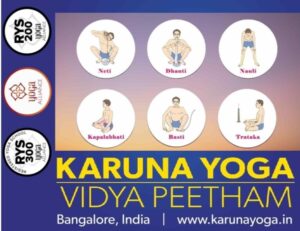
- Total Fee for the Training(For Indian Citizens Only): INR 07,000(Registration Fee) + INR 22,000 (Course Fee) = INR 30,000
- Total Fee for the Training(For Non-Indian Citizens Only): USD 200(Registration Fee) + USD 300 (Course Fee) = USD 500
- Accreditation: Yoga Alliance USA YACEP.
- Skill level: Beginners, Intermediate & Advanced
- Language: English
- Mode: Offline/Online/Hybrid/Self-Paced
- About the course facilitator: Dr. S. Karuna Murthy, M.Sc., Ph.D., E-RYT 500, YACEP
- Language: Our courses will be held in English Medium.
- Course Dates: Please Contact Us (karunaayoga@gmail.comor +91 9686549129)
International Certification
Upon successful completion of the course, you will receive a certificate of completion of the 12 Hours – Shat-Karma (Detoxification Course) Teacher Training Certification Course, which you can count towards your continuing education. Our yoga teacher training courses are accredited by Yoga Alliance USA.
Shat-Karma (Detoxification Course) Teacher Training Certification Course
Hatha yoga, as portrayed in the early Yoga Upanishads, was comprised of the Shat-karmas. It is proved accurate and scientific. Shat represents “six” and karma signifies ‘action’; the Shat-karmas comprise of six groups of cleansing practices. The point of hatha yoga and, in this manner, of the Shat-karmas is to create harmony between the two noteworthy Pranic streams, Ida and Pingala, along with achieving physical and mental purity and wellbeing.
The Shat-karmas are additionally used to control the three Doshas or humors in the body: Kapha, mucus; Pitta, bile; and Vata, wind. As per both Ayurveda and Hatha yoga, unevenness in the Doshas will bring about sickness. These practices are followed before pranayama and other higher yoga rehearses with a specific end goal to filter the body of impurities and to guarantee safe and effective advancement along the spiritual path. All these techniques are taught in the Yoga program at the Karuna Yoga, training center in Bangalore, India.
These effective strategies are never meant to be gained from books or instructed by amateur people. As per the custom, just those taught by a master may instruct others. It is fundamental to be personally trained in the matter of how and when to practice the shat-karmas, taking into account the limitations and requirements of the concerned individual. If you have any doubts in your mind, Karuna Yoga, teacher training will take care of all your concerns regarding the matter.
In spite of the fact that the purification and reinforcing effects of shat-karmas might be therapeutic, this is not their primary purpose. Shat-karmas are practices to enhance the strength of yoga professionals and to awaken and direct the energies in the body, mind and deeper mind. Individuals experiencing any therapeutic condition, who wish to use any of these practices, ought to look for the guidance of a skilled instructor. Karuna Yoga, shat-karma training in Bangalore is designed on the basis of such principles. The water used in these practices should be pure. If necessary, use an ultraviolet filter or boil the water for a few minutes and then allow it to cool to the required temperature.
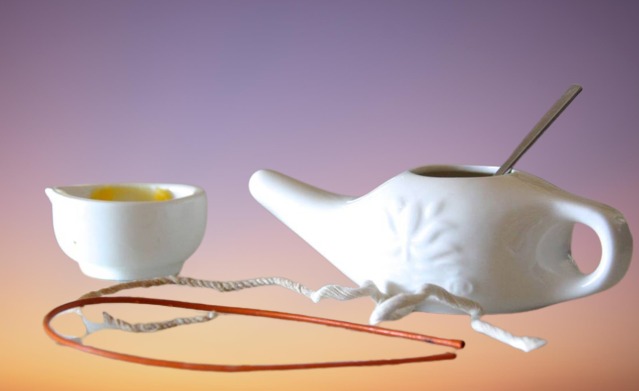
To whom this course for?
-
- Beginners If you’re looking to start a traditional meditation, chanting and pranayama practice to gain more clarity, calm and focus…this is the course for you.
-
- Yoga practitioners If you already have a yoga practice and want to go deeper with traditional practices from India this the perfect course to start that journey.
-
- Aspiring Yoga Teachers This course has been designed with Yoga Teacher Training elements and will prepare you well for the meditation, and pranayama elements of your training.
Pre-Requisites:
-
- This course is open to all students who wish to deepen their knowledge and application of some of the highest teachings of Participants do not need to be yoga teachers.
-
- Mastery of any yoga practice is not
-
- Only your sincere desire for knowledge and your commitment to personal
-
- Even if you do not wish to are required be a yoga teacher, you may attempt this course to deepen the understanding of the philosophies as well as for the intense purification experience and for the personality

What you’ll learn from this course
-
- Jala Neti (nasal cleansing with water)
-
- Sutra Neti (nasal cleansing with thread)
-
- Vaman Dhauti (regurgitative cleansing)
-
- Shankhaprakshalana(cleansing entire digestive tract
-
- Establish peace and harmony in the class and relieve students from stress.
Assessment and Certification
The students are continuously assessed throughout the course at all levels. There will be a written exam at the end of the course to evaluate the understanding of the philosophy of Yoga and skills of the students. Participants should pass all different aspects of the course to be eligible for the course diploma.
Recommended Texts
-
- Asana, Pranayama, Mudra and Bandha, Satyananda Saraswathi, Bihar Scool of Yoga, Munger.
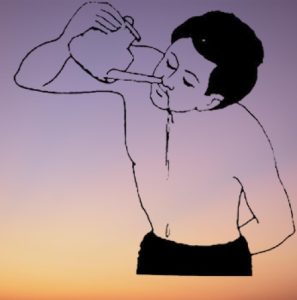
- Asana, Pranayama, Mudra and Bandha, Satyananda Saraswathi, Bihar Scool of Yoga, Munger.
What’s the language of the course?
Our courses will be held in English Medium.
Course Dates: Please Contact Us (karunaayoga@gmail.com or +91 9686549129)
About the course facilitator
Dr. S. Karuna Murthy, M.Sc., Ph.D., E-RYT 500, YACEP
Course Curriculum
Six Shatkarma (internal cleansing)
1. Neti: A process of cleansing and purifying the nasal passages.
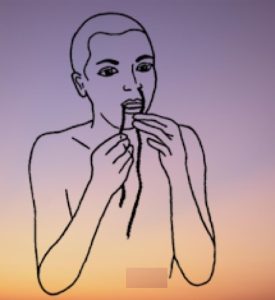
a. Jala Neti (nasal cleansing with water)
b. Sutra Neti (nasal cleansing with thread)
2. Dhauti: To cleanse the entire alimentary canal from the mouth to the anus.
a) Kunjal or Vaman Dhauti (regurgitative cleansing) cleansing the stomach with saline warm water.
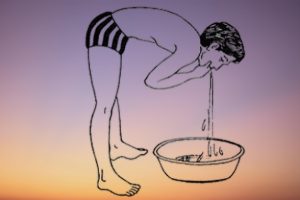
b) Shankhaprakshalana or Laghoo Shankha Prakshalana (cleansing entire digestive tract)
c) Agnisara kriya (activating the digestive fire)
3. Nauli: A method of massaging and strengthening the abdominal organs.
4. Basti: Techniques for washing and toning the large intestine.
5. Kapalabhati: A breathing technique for purifying the frontal region of the brain.
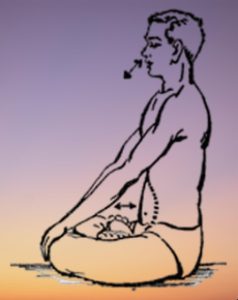
6. Trataka: Intense gazing at one point or object which develops the power of concentration.
a. Jyothi Trataka
b. Shambhavi Mudra
c. Nasigra Drishti
d. Jatru Trataka
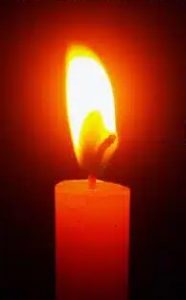
Terms & Conditions:
After the payment of the course fee, you will receive a link to access the classes through zoom. This short term course is only meant for sincere students of Yoga practitioner. Without submitting the required assignments, you will not receive a certification. Please note that the course fee is non refundable. However, if you can’t start the course due to severe circumstances, please get in touch with us and we’ll find a solution for you.
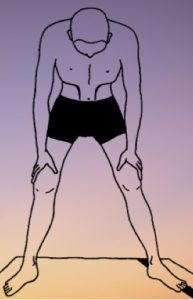
Pranayama Teacher Training Certificate Course
Yoga has become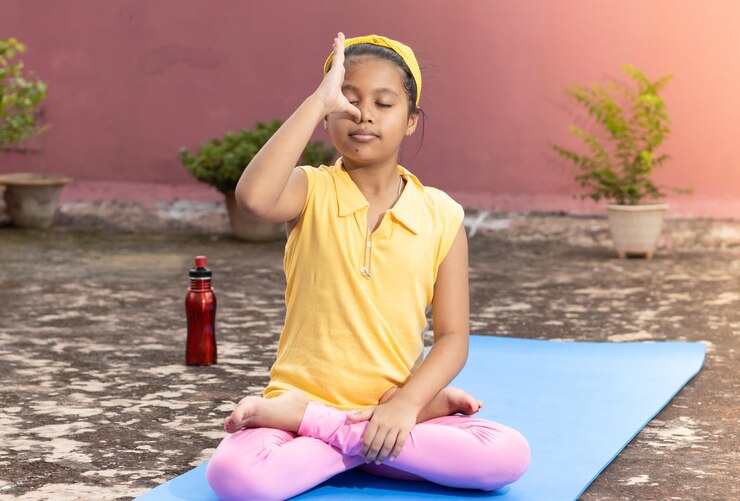 synonymous with term Asana; however the entire practice of Yoga is based on practices of consciousness. Asana, Pranayama, Mudra and Bandhas are the three most important techniques that lead to the state of higher level of meditation. When these four techniques are done with awareness, knowledge and preparation, Yoga becomes possible. In this journey to self-discovery, pranayama leads to the purification of senses, prana and mind. With a consolidated state of mind one attains Mudra and maintains bandhas in order to maintain one pointed awareness. Learn these four important practices in Yoga and let your practice be to attain the state of Yoga itself.
synonymous with term Asana; however the entire practice of Yoga is based on practices of consciousness. Asana, Pranayama, Mudra and Bandhas are the three most important techniques that lead to the state of higher level of meditation. When these four techniques are done with awareness, knowledge and preparation, Yoga becomes possible. In this journey to self-discovery, pranayama leads to the purification of senses, prana and mind. With a consolidated state of mind one attains Mudra and maintains bandhas in order to maintain one pointed awareness. Learn these four important practices in Yoga and let your practice be to attain the state of Yoga itself.
Yoga has become synonymous with the term Asana; however, the entire practice of Yoga is based on practices of consciousness. Asana, Pranayama, Mudra and Bandhas are the three most important techniques that lead to the state of a higher level of meditation. When these four techniques are done with awareness, knowledge, and preparation, Yoga becomes possible. In this journey to self-discovery, pranayama leads to the purification of senses, prana and mind. With a consolidated state of mind, one attains Mudra and maintains bandhas in order to maintain one-pointed awareness. Learn these four important practices in Yoga and let your practice be to attain the state of Yoga itself.
Pranayama
Pre-practices, practical hints, seasonal considerations, technical considerations, benefits and modifications of pranayama practices.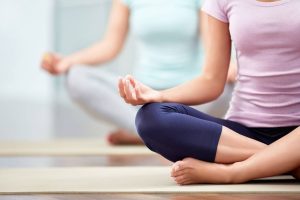
Pre-requisites:
- This course is open to all students who wish to deepen their knowledge and application of some of the highest teachings of
- Participants do not need to be yoga
- Mastery of any yoga practice is not
- Only yours sincere desire for knowledge and your commitment to personal
- Love for Yoga is the most important eligibility factor for learning this course.
- Students who want to know Yoga in totality and move beyond Asana and Pranayama, Mudra & Bandha.
What you will learn from this course?
- Four aspects of pranayama
- Pranic body & five koshas (sheaths)
- The five types of prana
- Pranayama’s health benefits
- Pranayama in spiritual context
- The respiratory system
- Yogic breathing and different types of Pranayama
- Neurological and physiological benefits of pranayama
- Benefits of Pranayama
- Types of pranayama and levels
- How to Practice and teach pranayama
- Relevance of pranayama in modern life
- How to practice meditation correctly
- How to teach meditation
- How to develop the right voice & script
- How to setup and structure a class
- Evidence based benefits of meditation
- Meditation and neuroscience
- An overview of different meditation traditions
- Fundamental principles of meditation
- Understand the science behind meditation
- Understand the difference between different meditation styles
- Important do’s and don’t s of teaching meditation
- Anatomy for finding the right sitting position
- How to integrate meditation in daily life
What do I need for the online course?
- Yoga mat
- Computer / Smartphone with camera
- Internet connection
- Yoga Blocks
- Pillow or Bolster or Cushion
- Strap
- Notebook and Pen
- Zoom
Assessment and Certification
The students are continuously assessed throughout the course at all levels. There will be a written exam at the end of the course to evaluate the understanding of the philosophy of Yoga and skills of the students. Participants should pass all different aspects of the course to be eligible for the course diploma.
Recommended Texts
- Asana Pranayama Mudra Bandha by Swami Niranjananda Saraswati
- B.K.S. Iyengar, Light On Yoga.
- Light on Pranayama: By B.K.S. Iyengar.
- The Science of Pranayama: By Swami Sivananda, this book is published by Divine Life Society.
- Asana Pranayama Mudra Bandha: By Saraswati Satyananda Swami.
- Mind Your Breathing: The Yogi’s Handbook with 37 Pranayama Exercises: By Sundar Balasubramanian Ph.d.
- Pranayama Mudra and Meditation: By Dr. Sharadchandra Bhalekar.
- Prana and Pranayama: By Swami S. Nirajanananda.
- Power Pranayama: By Dr. Renu Mahtani M.D.
- Kumbhaka Paddhati of Raghuvira: Science of Pranayama: By M.L. Gharote.
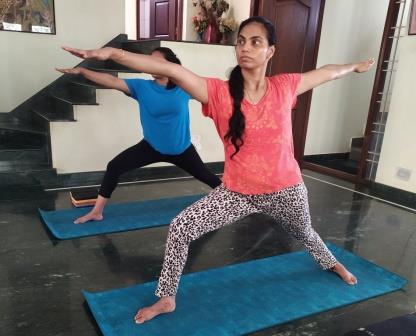
Curriculum Pranayama Teacher Training
1.Techniques Training & Practices (TTP)
- What is Prana?
- Prana and Kundalini Shakti
- Naadis (Energy Channels)
- Chakras (Energy Centers)
- The Five Koshas (Sheaths)
- Subtle Bodies
- Essential Guidelines of Pranayama
- Sixteen Types of Pranayama
- Udar Pranayama (Abdominal Breathing)
- Vaksha Pranayama (Thoracic Breathing)
- Jatruka Pranayama (Clavicular/Collarbone Breathing)
- Yogic Pranayama
- Kapalbhati Pranayama (Skull Shining Breathing)
- Chandra Pranayama (Moon Breathing)
- Surya Pranayama (Sun Breathing)
- Chandrabhedi Pranayama (Moon-piercing Breathing)
- Suryabhedi Pranayama (Sun-piercing Breathing)
- Anulom Vilom Pranayama (Alternate nostril Breathing)
- Naadi Shodhana Pranayama (Energy channel cleansing Breathing)
- Bhastrika Pranayama (Bellow Breathing)
- Sitkari Pranayama (Hissing Breathing)
- Sheetali Pranayama (Cooling Breathing)
- Ujjayi Pranayama (Victorious Breathing)
- Bhramari Pranayama (Honey bee humming Breathing)
- Yoga Mantra Chanting
1.1. Introduction
1.2. Mantras
- Gayathri Mantra
- Maha Mrityunjaya Mantra
- Saha nāv avatu
- Sarve bhavantu sukhinaḥ
- 3. Health Benefits of Pranayama
- Physical Benefits
- Psychological Benefits
- Emotional Benefits
- Vital Benefits
- Spiritual Benefits
- Anatomy & Physiology of Respiratory system
Anatomy & Physiology of Pranayama
1.1. Gaseous Exchange:
1.2. Respiratory System
- a) Larynx:
- b) Trachea (wind pipe)
- c) Bronchi
- d) Bronchioles
- e) Alveoli (Air sacs)
1.3. Lungs
1.4. Pleura
- External Anatomy
1.5. Bronchi
- 6. Pulmonary Ventilation:
1.7. Respiration Mechanism
- a) Shallow breathing
- b) Deep Breathing
- c) Unconscious control of breathing
- d) Conscious control of breathing
1.8. Lung Volume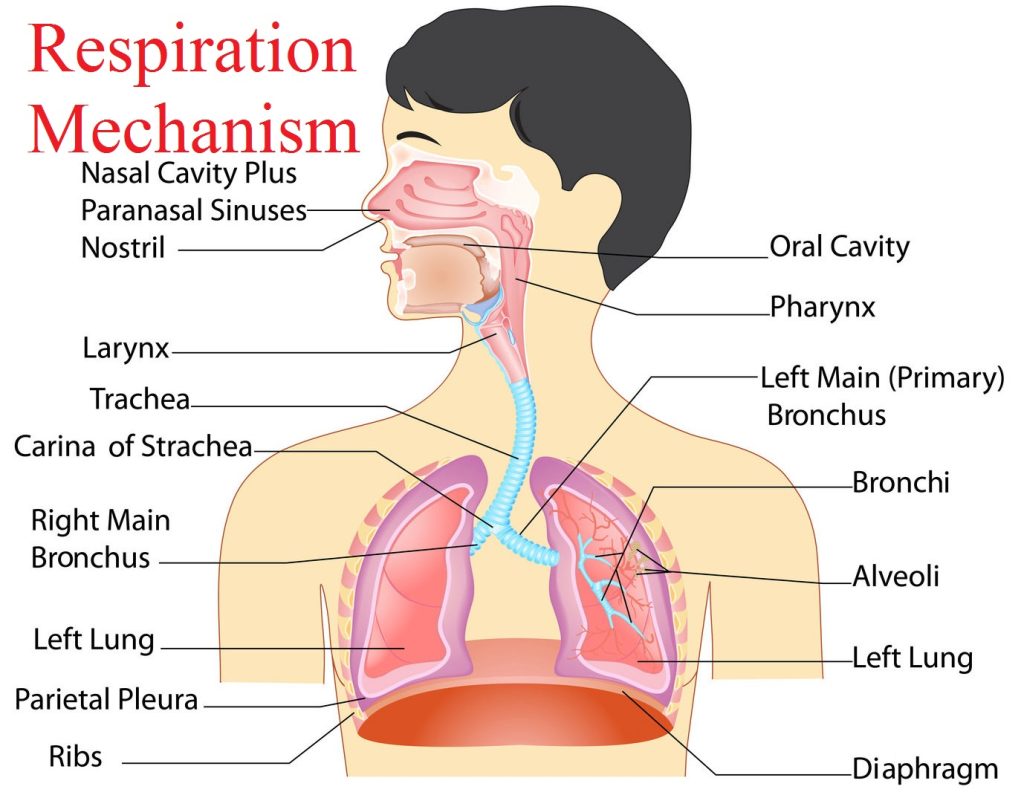
- Total air volume
- Tidal volume
- Vital capacity
- Philosophy of Pranayama
- History of Yoga
- Philosophy of Yoga
- Philosophy into Practice
- Ayurveda – Allied Practice of Yoga
- Contraindications, Misalignments, & Adaptations
- Relevance of Pranayama in modern life
- Learn the important guidelines for teaching Pranayama
- Introduction of Ashtanga Yoga
- First Limb – Yama
- Second Limb – Niyama
- Third Limb – Asana
- Fourth Limb – Pranayama
- Fifth Limb – Pratyahara
- Sixth Limb – Dharana
- Seventh Limb – Dhyana – Meditation
- Eighth – Samadhi – Super Consciousness
- 6. Teaching Methodology
- Sequencing
- Environment for Yoga
- Cueing
- Class Management
- How to Practice and teach Pranayama
- How to setup and structure a class
- Professional Development
- Ethical Commitment
- Yoga Professionalism Guidelines
- Practicum
- The Practicum (Teaching Practice)
- Mudra
5.1. Introduction
5.2. Mudras and prana
5.3. A scientific look at mudras
5.4. Mudras
- Jnana mudra
- Chin mudra
- Bhairava mudra
- Hridaya mudra.
- Shambhavi mudra
- Nasikagra drishti
- Shanmukhi mudra
- Yoga mudra
- Bandhas (neuro-muscular locks)
6.1. Introduction to Bandha
6.2. Granthis
6.3. Bandha (lock)
- Jalandhara Bandha (throat lock)
- Moola Bandha (perineum contraction)
- Uddiyana Bandha (abdominal contraction)
- Maha Bandha (the great lock)
- Yoga Nidra
- Introduction
- Yoga Nidra steps
- Preparation/Introduction
- Relaxation
- Sankalpa/Resolve
- Rotation of Consciousness
- Breathe Awareness
- Feeling of Sensations
- Image visualization
- Sankalpa/Resolve
- Finish
- Shatkarma (internal cleansing)
- Jala Neti (nasal cleansing with water)
14.Warm Up For pranayama
- Seated warm up
- Child’s Pose Balasana
- Tabletop Pose
- Cat and Cow Stretch
- Supine Twist Jathara Parivartanasa
- Thread the Needle Parsva Balasana
- Knees-to-Chest Apanasana
- Downward-Facing Dog
- Upward-Facing Dog Urdhva Mukha Shvanasana
- Hands in & out Breathing
- Hands stretch breathing
- Ankle stretch breathing
- Tiger breathing
- Dog breathing
- Rabbit breathing
- Alignments of Sitting Asanas (Poses)
- Vajrasana (Thunderbolt/ Adamantine/ Diamond Pose)
- Ardh Padmasana (Half Lotus Pose)
- Siddhasana(Psychic Pose)
- Padmasana (Lotus Pose)
FAQ
- What is typically included in the course curriculum?
- Theory of Shat-Karma: Origins, purpose, contraindications
- Hands-on training: Supervised practice of Neti, Dhauti, Nauli, etc.
- Pranayama basics & teaching techniques:
- Nadi Shodhana, Ujjayi, Bhastrika, Kapalabhati
- Breath retention (kumbhaka), Bandhas (locks), and Mudras
- Anatomy & Physiology: Effects on respiratory, digestive, nervous systems
- Teaching methodology: Class structure, adjustments, safety protocols
- Detox Diet & Yogic Lifestyle guidance
- Manual, assignments, and final assessment
- What are the benefits of completing this TTC?
- Deep detoxification on a physical, mental, and energetic level
- Ability to teach cleansing kriyas safely
- Improved breath capacity, focus, and pranic energy
- Certificate of completion (may count toward Yoga Alliance CE hours)
- Enhanced understanding of traditional Hatha Yoga and Ayurveda-based detox
- Is this TTC certified or Yoga Alliance accredited?
- Many schools offer YACEP (Yoga Alliance Continuing Education Provider) hours for this course.
- Some also include it as a module within a 200H or 300H TTC, which is fully Yoga Alliance recognized.
- What should I bring for practice?
- Neti pot and rubber catheter (provided or purchased at the school)
- Soft cotton cloth (for Vastra Dhauti, if included)
- Mat, towel, loose comfortable clothing
- Water bottle, salt (for Jala Neti)
- Notepad & pen
- Trimming the nails
- How long is the course?
- Short courses: 20–30 hours (3–5 days or spread over 2 weeks online)
- Online or in-person formats vary in intensity and structure
- Is it safe to do these practices at home after learning them?
- Some kriyas like Jala Neti, Kapalabhati, Trataka can be safely practiced at home
- Others like Nauli, Dhauti, and Basti should only be done after proper training and when necessary
- It is not advisable to teach these to others unless you’ve received adequate teacher training in technique, anatomy, and precautions
- What is the cost of such a TTC?
- Ranges from $300 to $600 USD depending on:
- Can I teach detox workshops after this course?
Yes—upon completion, you’ll be qualified to:
- Lead Shat-Karma detox classes or workshops
- Safely guide students in breathwork & pranayama techniques
- Are there any side effects or risks?
While Shat-Karma kriyas are deeply healing, improper use or unsupervised practice can cause:
- Dizziness or fatigue
- Dehydration
- Disturbed digestion
- Aggravated existing conditions
- Dizziness or headaches (from overdoing pranayama)
- Nausea or cramping (from Dhauti, Basti, Nauli)
- Dryness or irritation (from excessive Neti)
- Emotional release or fatigue (common in deep detox)
- What certification will I receive?
- Certificate of Completion (30–50H) if it’s a short course
- RYT-200/300 diploma if integrated into a full TTC
- May be eligible for Yoga Alliance CE hours (YACEP) if taught by a registered school
Reference Books
- Hatha Yoga Pradipika – by Swami Swatmarama – with commentary by Swami Muktibodhananda (Bihar School of Yoga)
- Gheranda Samhita – by Sage Gheranda
- Asana Pranayama Mudra Bandha (APMB) – by Swami Satyananda Saraswati
- Hatha Yoga Pradipika – by Swami Vishnudevananda
- The Science of Pranayama – by Swami Sivananda
- Yoga & Kriya: A Systematic Course in the Ancient Tantric Techniques – by Swami Satyananda Saraswati
- The Science of Pranayama – by Swami Sivananda
- Pranayama: The Breath of Yoga – by Gregor Maehle
9. Light on Pranayama – by B.K.S. Iyengar
How to Register?
You can apply online with the application, fee of INR 10,000 (non-refundable) advance towards the course fee or Please Contact Us (karunaayoga@gmail.com or +91 9686549129)
